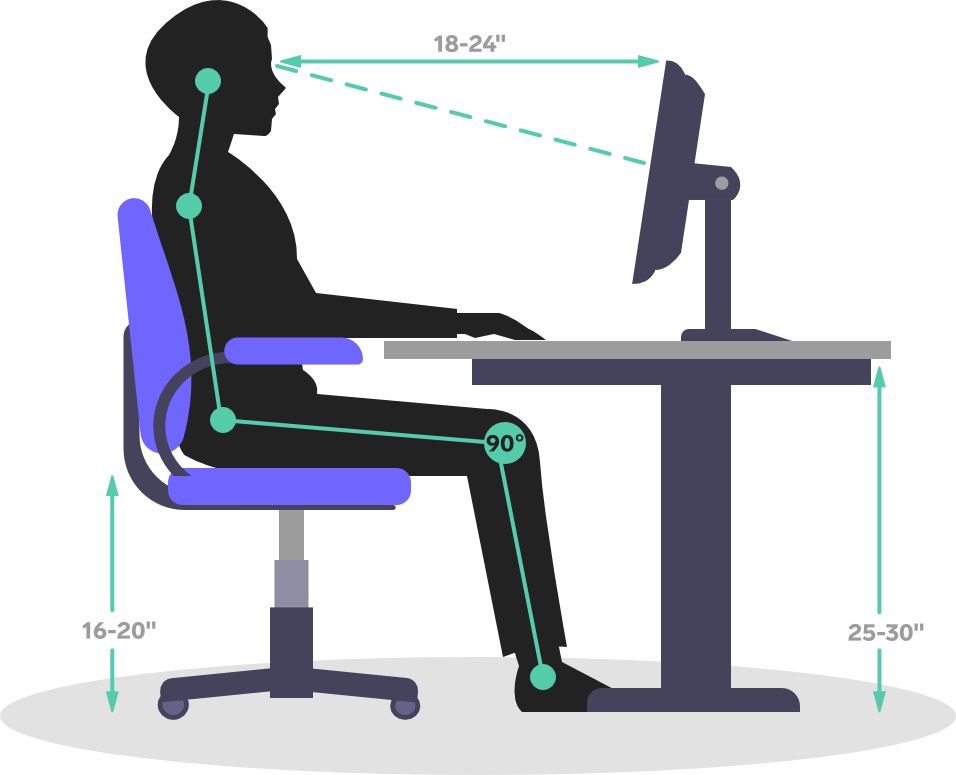How to Set Up Your Desk Ergonomically

Nicole Copestake


Spending eight hours a day, reaching, slouching or craning can lead to pain. Here’s some important steps to follow to set up your desk ergonomically so you can avoid pain later in life.
Step 1: Adjust Your Chair
The average desk height is about 29 to 30 inches tall. For some this could be too tall or too short.
Adjust the height of your chair and make sure that your elbows are bent to 90 degrees.
If you find your feet aren’t touching the ground this could become an issue. To overcome this try using a footstool or grab a few boxes of paper or books.
Step 2: Adjust Your Monitor
Position your monitor about an arms length away.
Raise your monitor up so that the top of the screen is at about eye-level. This will allow you to read without straining your eyes or bend forward and adjust your posture. If your monitor is not adjustable, use some boxes of paper or books.
If you work from two monitors, consider how you use them.
If you have a primary monitor, position it directly in front of you. If you use both monitors equally you want them lined up so you are in the middle of the two.
For a laptop, you want to use an adjustable laptop stand to raise the screen up to eye-level. Then you can connect an external keyboard and mouse to your laptop.
Step 3: Mind Your Mouse and Keyboard
Where your hands end up is where your keyboard should be.
Your mouse should be right next to your keyboard. Try moving your mouse using your elbow to avoid overuse, strain or pain. The key is to not reach for your tools.
Step 4: Position Your Phone
Place your phone on your non-writing side so you don’t have to cradle it to your shoulder, which can eventually lead to neck pain.
If you use a phone regularly throughout the day, consider using a headset so your hands are free to write down anything or type on the keyboard.
Step 5: Move & Stretch
After 10 to 15 minutes you’re likely to start slouching in your chair. There are some basic exercises you can do all whilst sitting in your chair to limber up.
Chin Tuck

Relax your shoulders and look straight ahead. Gently glide your chin straight back without tilting your head up or down, or bend your neck forward. Hold for about 5 seconds and then relax.
Upper Trap Stretch

Draw your head back, lining your ears up with your shoulders. Place one hand behind your back and place the other hand on your head. Gently stretch your head away from the arm that is placed behind your back.
Scapular Retraction

Squeeze your shoulders back while preventing your shoulder from doing an upward motion or shrug. This is the opposite to a scapular protraction which pushes your shoulders forward, leaving you with a hunched posture.
Pelvic Tilt

Sit upright, clear of the back of the chair with your shoulders relaxed and eyes looking straight ahead. Rock your pelvis back and forth, and from side to side. This is an important exercise to help correct your posture.
The most important thing you want to do is get up out of your chair at least once an hour. Get up and walk around, get something to eat or get something to drink. Just get up!
